A pilgrimage worth doing twice
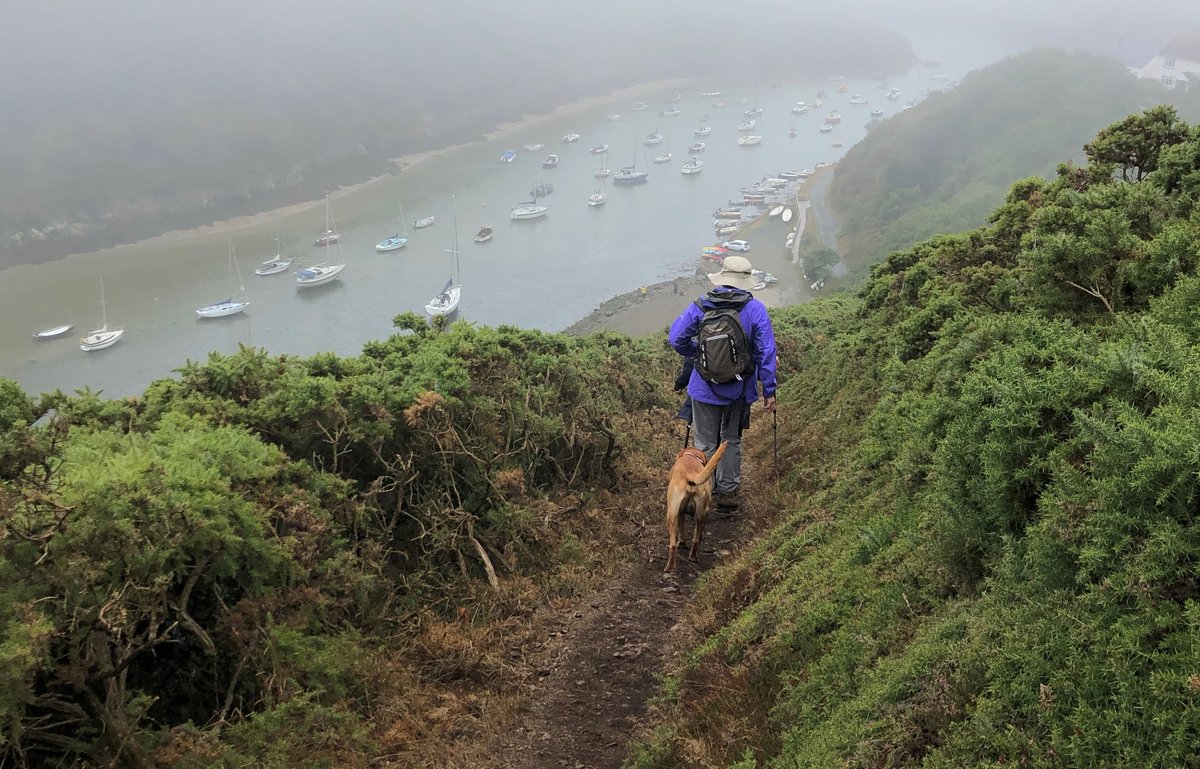
Snuggled on a peninsular in the far west coast of Wales lies the UK’s smallest city and one of its biggest centres for pilgrimage. Next year, St Davids marks a significant milestone as a pilgrim city - it will be 900 years since Pope Callixtus II declared that two pilgrimages to St Davids Cathedral were equal to one journey to Rome.
To celebrate the anniversary, the Diocese of St Davids has designated 2023 as its Year of Pilgrimage, beginning this Advent, with many events planned. Anna Morrell joined in a Sacred Sites pilgrimage, run by the Cathedral’s pilgrimage centre, Tŷ’r Pererin, to get a taste of what to expect.
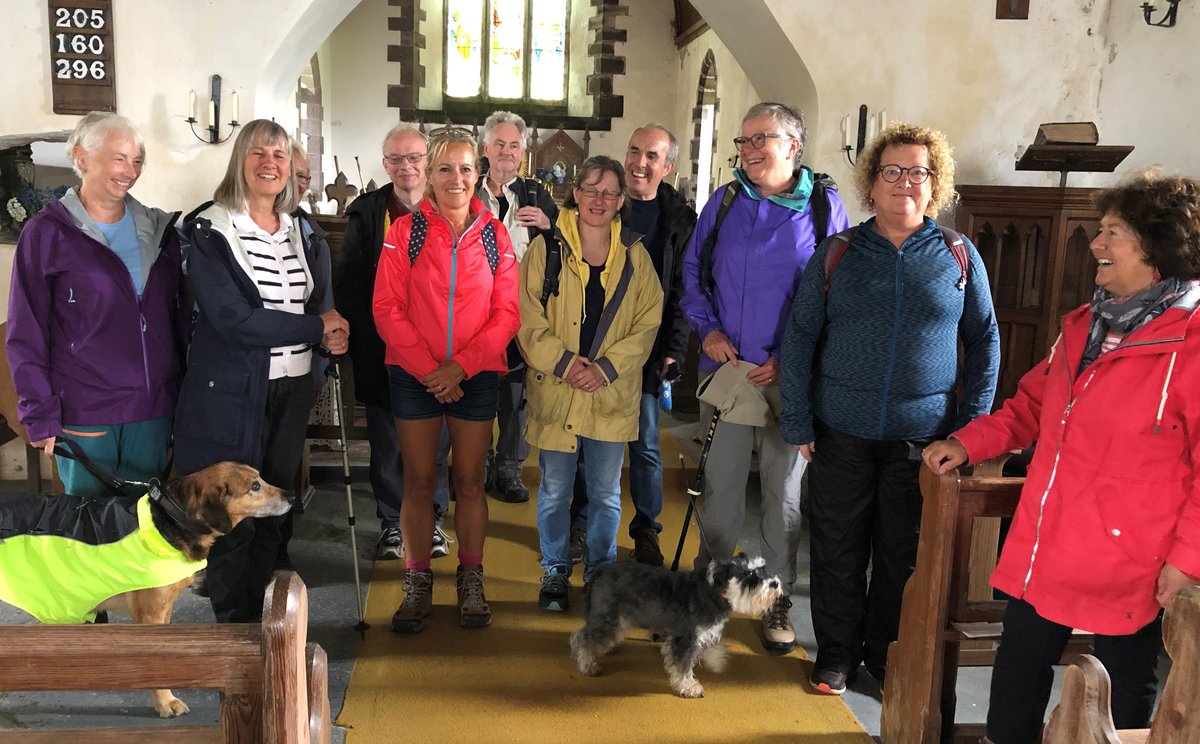
Anyone who has ever ventured as far west as St Davids will fully appreciate Pope Callixtus’ reasoning that two trips to that remote corner of Wales were equivalent to one to Rome. The pilgrim’s progress was supposed to be neither easy nor convenient and picking a path across the stunningly beautiful but sparsely-populated, windswept land could be as perilous as crossing the open sea and taking your chances on the highways to the eternal city. Arguably today’s pilgrim might even find it easier to head to Rome, airport operations permitting, than face the inevitable holiday queues on the UK motorways all the way to West Wales.
The Pope’s decree, however, wasn’t so much about the inconvenience or otherwise of the pilgrimage but about the significance of St Davids to the Christian faith. It recognized the importance of the Cathedral, which housed the shrines of St David and St Caradog, as well as other holy relics, and the surrounding chapels, dedicated to other saints – St Non (the mother of St David), St Patrick and St Justinian. So pilgrims who had been making their way to St Davids for centuries, now had even more reason to return and the medieval village flourished.
Fortunes have fluctuated over the years but in recent times, there has been a resurgence of interest in pilgrimage. Today, nearly 300,000 visitors cross the cathedral threshold annually and the cathedral has converted a former school into a dedicated pilgrim centre. The notion of walking simply, mindfully, prayerfully and with purpose to places that have been considered sacred by generations of our ancestors sits comfortably with our 21st Century aspirations of physical, mental and spiritual well-being, eco-friendly lifestyles and desire to find connection with our heritage.
And so it was that about a dozen people and three dogs met on a misty Monday morning for a Sacred Sites pilgrimage, just a few miles east of St Davids at the ancient St David’s Church in the hamlet of Whitchurch. In medieval times, the church was limewashed, giving the hamlet its name ‘White Church’, and was a beacon for pilgrims travelling from the east along the ‘via Julia’ route to St Davids Cathedral. Outside the church was also a stone cross, giving rise to the hamlet’s Welsh name, Tregroes – place of the cross. There the pilgrims would have received a welcome, nourishment and time for prayer and reflection before their final push to the Cathedral. Today most of the church’s visitors are walkers, tourists and cyclists, and the congregation has dwindled to just three members who are gallantly planning to create a heritage centre and pilgrim resting place.
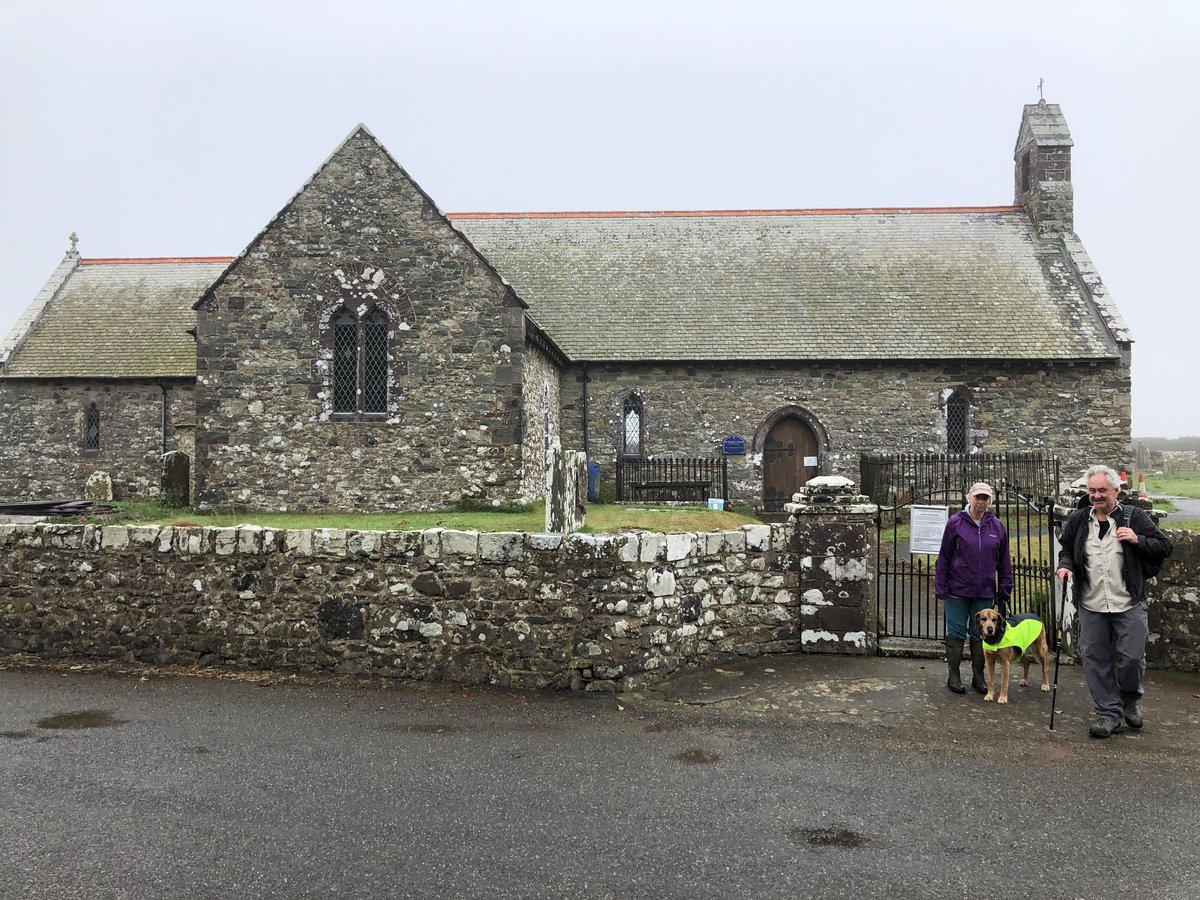
Our pilgrimage was organized by Janet Ingram, education and pilgrimage officer at St Davids Cathedral pilgrim centre, Tŷ’r Pererin. It was a four-mile circular pilgrimage, beginning and ending at Whitchurch. Janet began by grounding the pilgrims in prayer, with a Celtic prayer of blessing, before we stepped out of the church and the ‘’llan”, the church grounds, towards a nearby hidden footpath which ran parallel to the road. This, it turned out, was the ancient pilgrim path which led to a holy well in a large coppice, overlooked by the outline of an Iron Age fort. The well was an impressive stone structure now largely hidden in undergrowth which had been recently hacked back to make way for visiting pilgrims. For most of the year, water cascades from the well into pools below but a dry summer has taken its toll in Pembrokeshire, which became one of the first counties in the UK to introduce a hosepipe ban. While the well was still full, the stream was barely a trickle. Nevertheless, with the low mist hanging off the trees and the air damp with drizzle, the site felt magical.
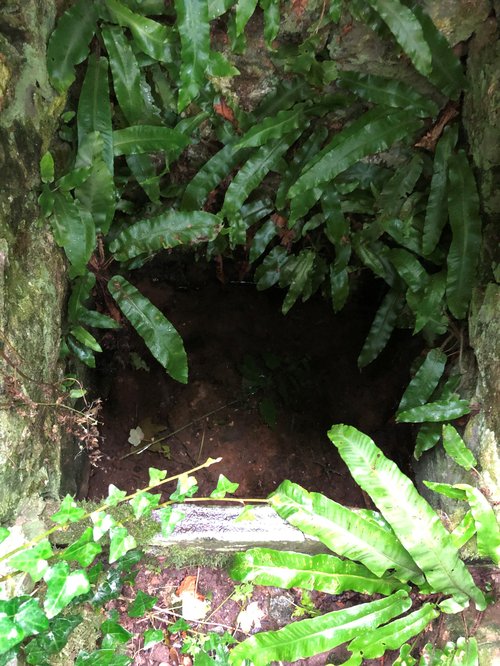
Janet described how wells like this were revered by pilgrims who came to ask for healing. They would drink the water from the shell that they traditionally carried and immerse themselves in the stream. Each well was associated with healing different ailments. While the knowledge of which well cures what ills has receded in the midsts of time, Janet pointed out that the stones around this well had turned red, suggesting water rich in certain minerals. She reminded us that the word ‘well’ also means ‘healthy’ and is used today in our ‘well-being’. The Welsh word for ‘well’ is ‘ffynnon’ which also suggests ‘source’. So language shows us how wells were seen as the source of life-giving properties.
The next section of the pilgrimage was to the site of the pilgrim hospital in the valley at Middle Mill. This was led by Amanda Stone, a psychotherapist from Australia who now lives and works locally in Solva and is involved in community projects. We were asked to walk in silence for the short way to the site. This gave us a chance to focus and reflect on the journey, rather than getting to know each other. It proved to be a powerful moment, walking as if on your own, but in company – a shared experience.

We reached the site of the long gone hospital – in an – increasingly rare – verdant field across the valley’s clear flowing stream. The term ‘hospital’ came from ‘hospitality’ and was a place where pilgrims were looked after and could rest and eat – the modern equivalent might be a bunkhouse. There was also another well at the site, though now on private property. It felt a comforting place, safe from sea gales from the nearby coast. Here we paused for reflection and some inspiring poetry from Ted Hughes.
From the valley floor, the ancient pilgrim path wound up onto the hillside over the picturesque harbour of Solva, where trade ships once sailed back and fore to America. There are classic views of Solva, familiar to most holidaymakers, but this walk afforded a new perspective on the village. Even those among us from the area felt they were somewhere new and exciting. That, said Janet, was part of the purpose of pilgrimages – the chance they offered to see life and our own situation from a different point of view, refreshing our understanding of ourselves and of others.
It applied to the wildflowers around us too. As we climbed the steep path, Janet described how much of the flora around us had religious associations which were revealed in their Welsh names. Such as the purple flower, Betony, which in Welsh is Cribau San Ffraid - St Bride’s Comb. St Bride reputedly came to Wales from Ireland, crossing the sea on a sod of earth. The bay where Solva and St Davids lie is named after her, St Bride’s Bay. The common seaside flower, Thrift, is Clustog Fair in Welsh, which means ‘Mary’s cushion’. There are plenty more flowers whose Welsh names are associated with St Mary, showing a strong Marion influence.
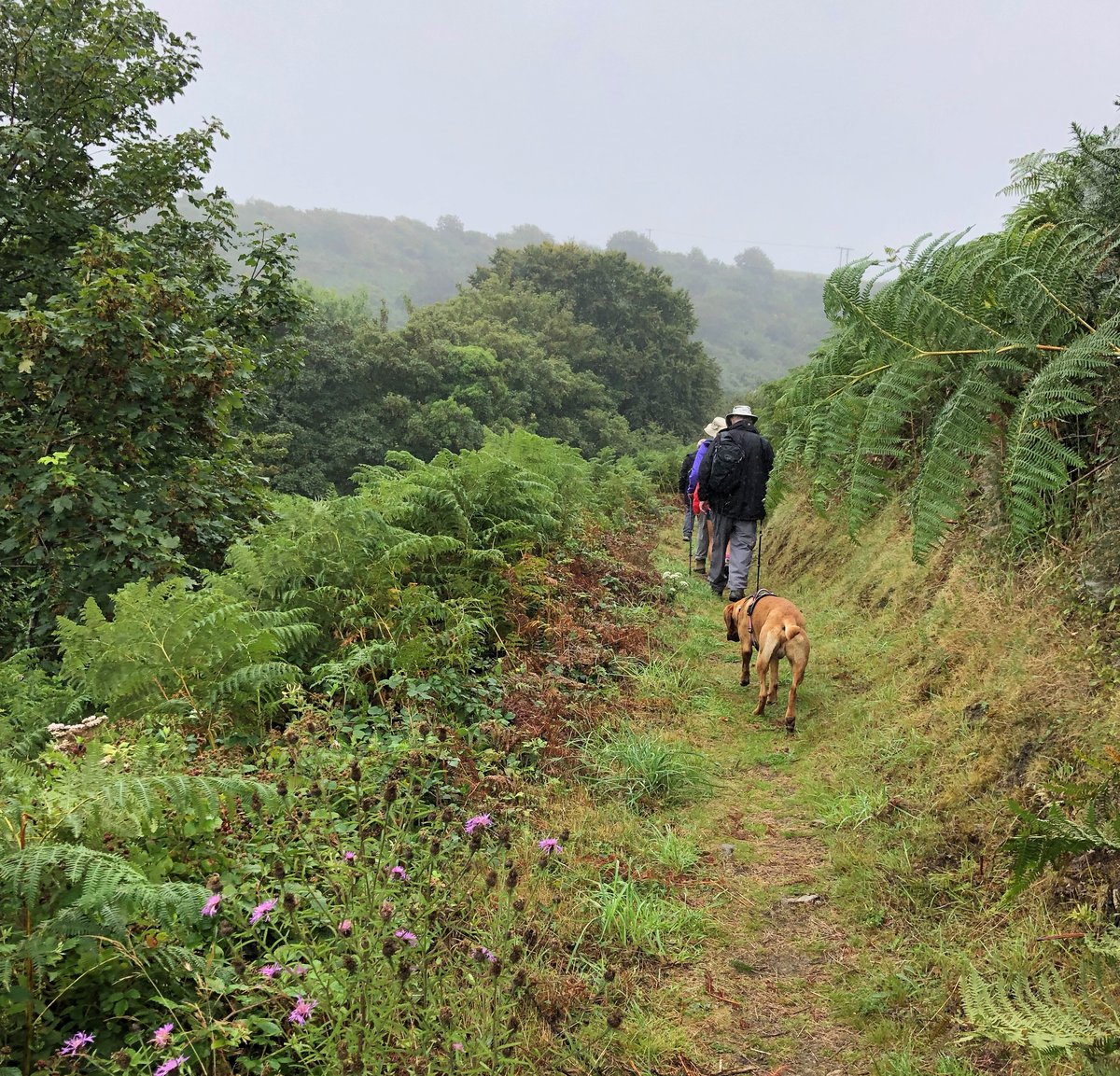
Descending into Solva, we stopped for our picnic lunch and time for reflection at the village memorial hall. For Amanda, the morning had provided valuable time away from weekly routine and for reflection.
“I feel I have been out of time and space, just being out of Solva in what feels like an ancient place. I woke up tired but I now feel refreshed.”
Another Solva pilgrim, Sue Denman, had also found the experience valuable. “I am not particularly religious and haven’t done anything like a pilgrimage before. But what fascinated me was the notion of learning about pilgrimage,” she said. “Linking that with the environment, poetry and well-being. I felt it offered something for everyone.”
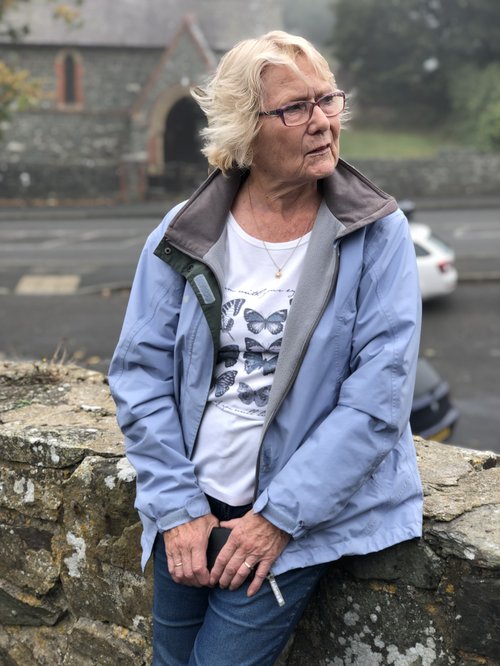
For Brenda Lloyd (left) one of the three members, and also a church warden, of St David’s Church, the morning had reminded her of the church’s great social past as the centre of the community. “As I walked those ancient tracks I could imagine people from long ago walking them to the church where they would find spiritual refreshment. It showed me that St David’s is not just the ‘church on the hill’ – it’s been an important part of people’s lives for centuries. I hope we can re-discover that connection, that social link.”
The morning had also been a revelation to someone particularly experienced in the way of pilgrims. Chris Crooks recently moved to St Davids from another pilgrim hotspot the opposite end of the country, Canterbury Cathedral, to work as Dean’s Verger at St Davids Cathedral. “It’s an amazing opportunity to step away from the bustle of main roads and rediscover ancient pilgrimage routes that have brought people to St Davids for centuries,” said Chris, who was the vesturer at Canterbury Cathedral. “It helps you realise that place is more than the here and now – it has been in people’s minds and hearts for centuries. There’s a sense of continuity. The paths are hidden in plain sight- quite a revelation to find them.”
The last leg of the pilgrimage skirted past the newest church of the 13 in the Greater Dewisland Local Ministry Area. St Aiden’s was built in 1879 to serve the growing population in Solva, inevitably taking the congregation away from Whitchurch, now stranded on the outskirts. Looking out toward the harbour we were reminded about Solva’s pirate past with its concealed smugglers’ stores and shafts. “Pilgrims lived alongside pirates - the celestial and the profane were all here,” said Amanda.
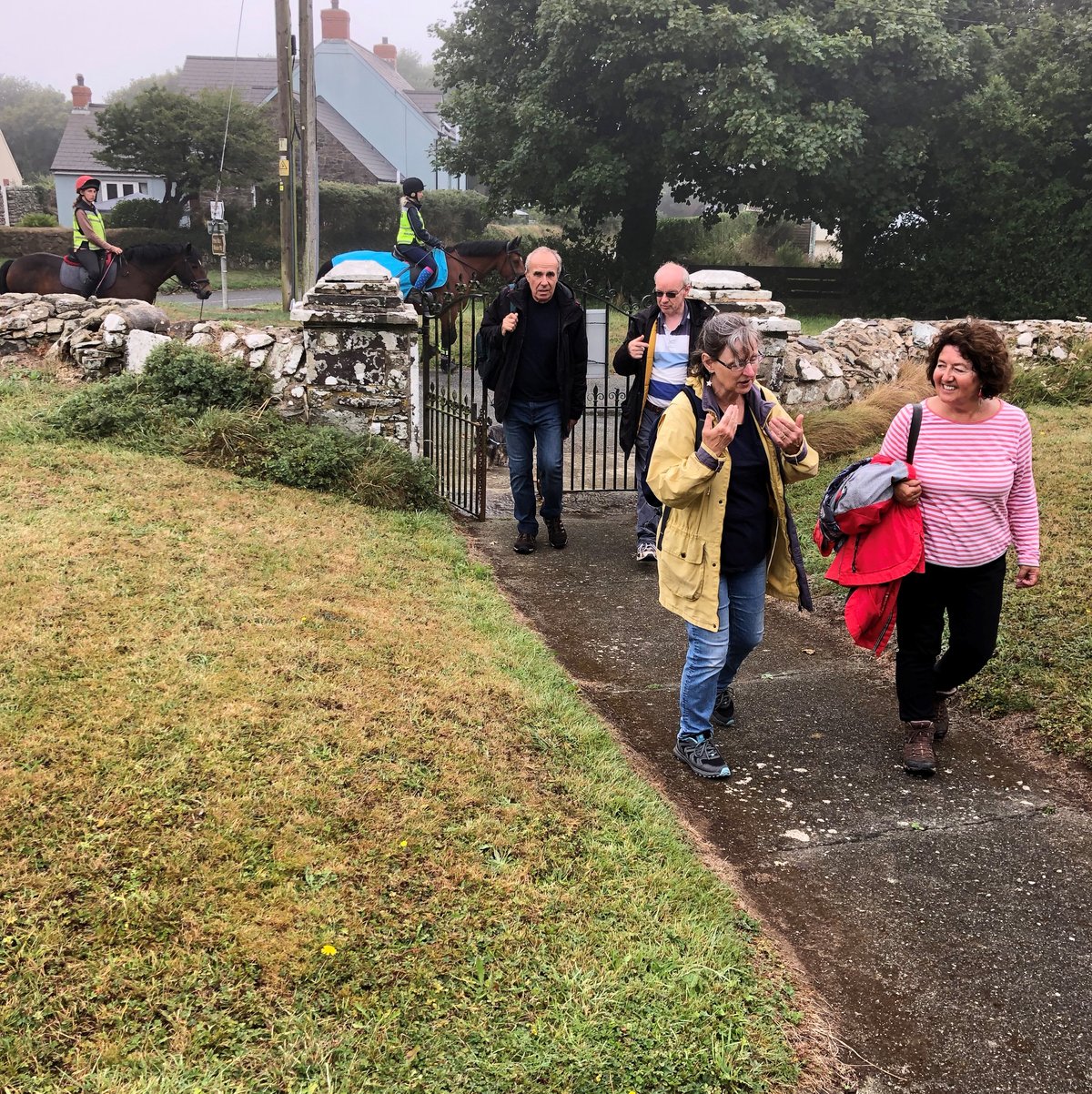
Our journey ended back at the old ‘llan’ – the enclosed land around St David’s Church. We were welcomed back with tea and homemade cake and ‘bara brith’ – current loaf - served in the north transept. As we refreshed ourselves Janet read a final poem, by RS Thomas, and sent us on our way with the same Celtic prayer of blessing that had begun the pilgrimage.
Our pilgrimage might only have been a modest venture, just shy of four miles. However, we left fully refreshed, with a deeper understanding of ourselves and our connection with time and place. We also felt a sense of the rich spiritual nature of this part of Wales, rightly recognized, we agreed, by Pope Callixtus II as a sacred space, one of those ‘thin’ places between earth and heaven, and one that keeps calling you back.
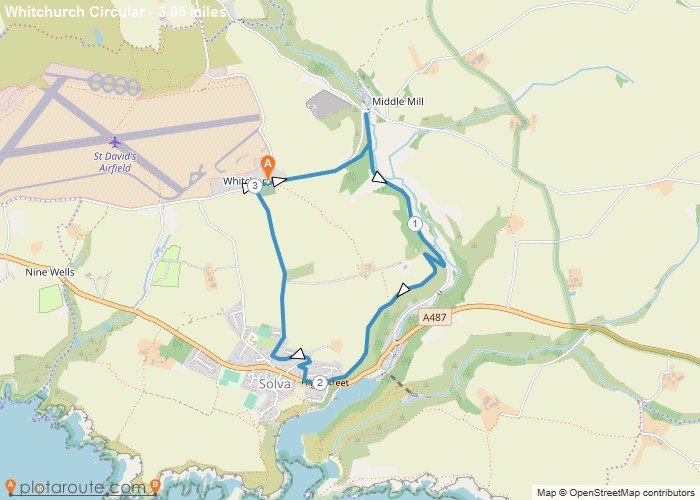
The next special pilgrimage day along ancient pilgrimage routes is Thursday 29th September, walking the Bek Acre.
Find out more about the Year of Pilgrimage at